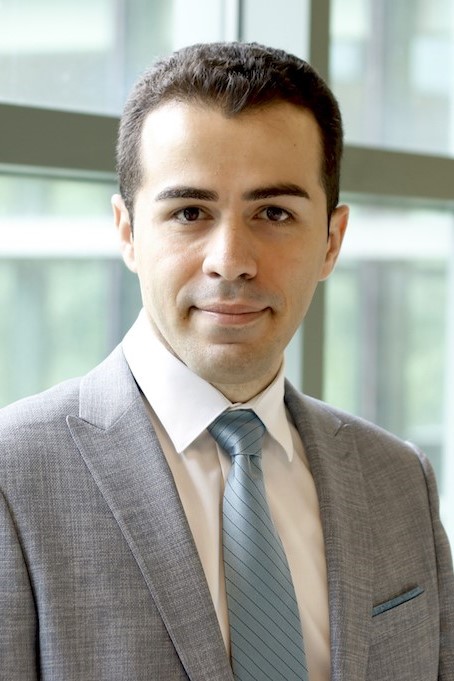Friday, October 21
Channels:
By Emily Wilmsen
The 27-second video plays on a loop and it’s mesmerizing to watch: Carbon fiber material pouring out of a 3-D printer and slowly swirling and stacking like soft-serve ice cream.
Except there’s no ice cream cone or cup to hold this material, known as carbon fiber composite – a strong, lightweight material that has been used for decades on everything from airplane panels and wind turbines to tennis racquets.
In the video, the material hardens on its own as it unfolds on a heated surface, with no mold or structure to hold it in place.
This free-form creation shows off the work of Mostafa Yourdkhani, assistant mechanical engineering professor in the Walter Scott, Jr. College of Engineering, who is working to reduce the cost, time and energy required for production of these complex structures, according to his newest paper published on the cover of ACS Applied Materials & Interfaces.
“We’re making it faster and more energy efficient,” said Yourdkhani. Mechanical engineering doctoral students Morteza Ziaee and James W. Johnson are also authors on the paper. “Imagine you want to bake a cake and you put the dough on a bench and it just becomes a cake with a trigger. For cakes, you need molds; here we make structures without molds. These are complex patterns that are light and save fuel.”
He and his team are among the first in the world to complete this type of composite printing.
The video alone has been gaining traction on his LinkedIn account with about 1,000 likes from colleagues around the world. “A video from our recent work on in-situ printing and curing of discontinuous fiber-reinforced thermoset composites!” his post reads. “Two printing strategies (freeform and layer-by-layer printing) with no post-curing step. See our paper led by Morteza Ziaee on this interesting work.”
“I’m quite passionate about this technology,” Yourdkhani later says. “having worked in the composite field for many years, this technology addresses all issues we have with composite production.”
Yourdkhani shows the video to illustrate that he and his graduate students have discovered a way to print carbon fiber composites in a very short amount of time with minimal heat. Most industrial production of carbon fiber requires intense heating of molds that spend 6 to 10 hours in huge ovens the size of semi-trucks.
Forget the giant molds and reduce the time to mere minutes – that’s what Yourdkhani’s team has done to create these thermoset composites in his laboratory. Thermoset polymers are liquids that turn solid through a one-way chemical reaction, meaning they won’t turn back into liquids upon reheating. Epoxy that is used in woodworking is an example of a thermoset polymer.
This summer, he has engaged engineering undergraduates and high school students in his research, but he’s looking for students from different disciplines like chemistry and computer science as well.
“Chemistry, mechanical engineering, robotics and computer science all connected to make this happen.”
Tags assigned to this story
Share
© 2022 Colorado State University






